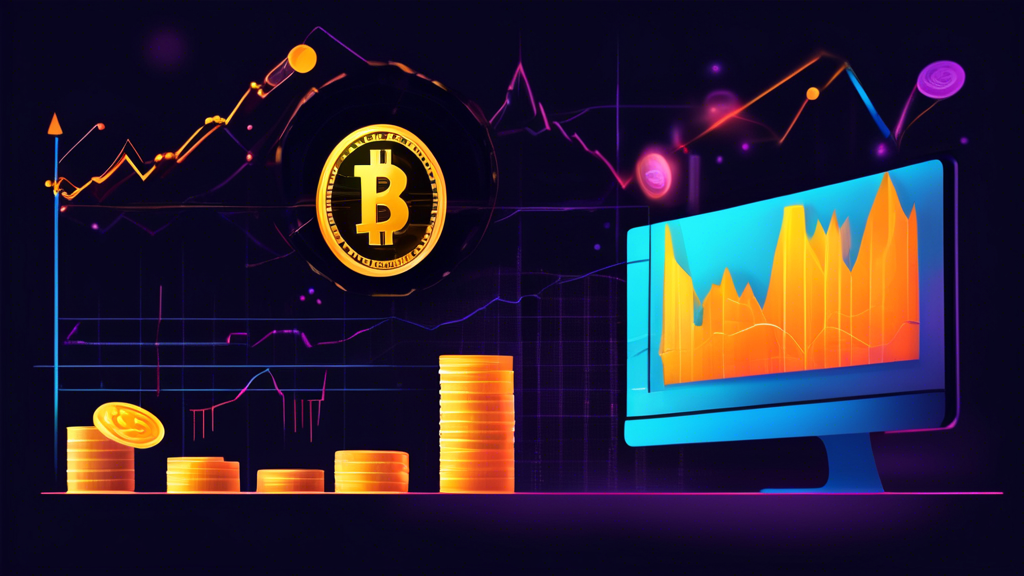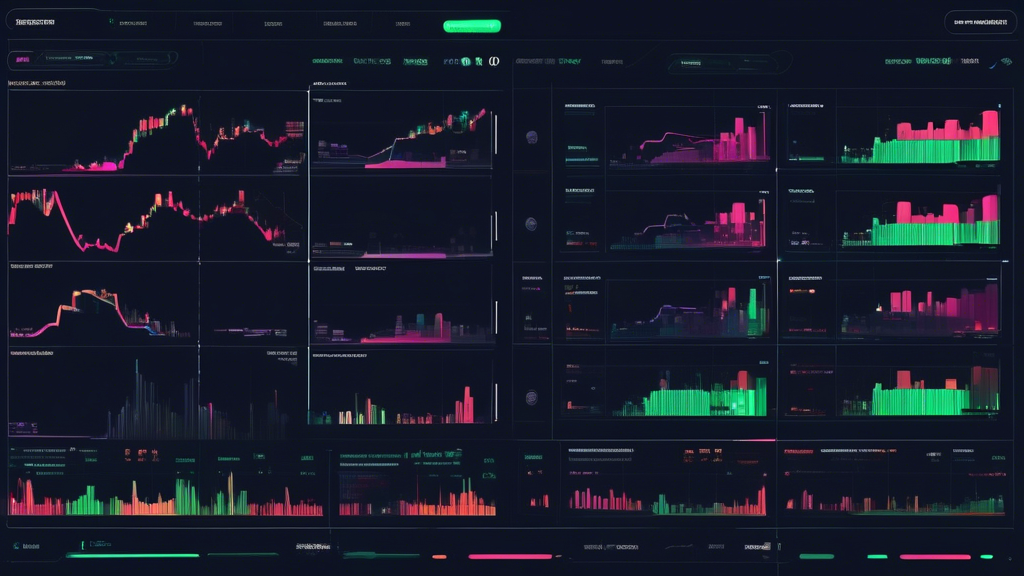Understanding Margin Trading in Crypto: Risks and Rewards What is Margin Trading in Crypto? A…
Understanding the Differences Between Crypto Trading and Margin Trading

In the ever-evolving world of financial markets, trading has emerged as a popular method for individuals to potentially grow their wealth. Among the myriad of trading options available, two of the most intriguing are crypto trading and margin trading. While both hold the promise of significant returns, understanding the nuanced differences between them is crucial for any aspiring trader.
Crypto trading refers to the buying and selling of cryptocurrencies like Bitcoin, Ethereum, and other digital assets. This form of trading has gained widespread attention due to the explosive growth of crypto markets and the potential for high profits. Crypto trading can be broken down into various types, including spot trading, where traders buy and sell assets for immediate delivery, and futures trading, which involves agreements to buy or sell assets at a future date and price. Each type of crypto trading comes with its own set of benefits and risks, making it essential for traders to be well-informed before diving in.
On the other hand, margin trading is a strategy that allows traders to borrow funds to trade larger positions than their account balance would normally permit. This method amplifies both potential profits and risks, and it can be used in various financial markets, including stocks, forex, and cryptocurrencies. Margin trading can be attractive due to its ability to potentially yield high returns, but it also requires a strong understanding of leverage and the potential for substantial losses.
Comparing crypto trading and margin trading reveals key differences that are crucial for traders to understand. For instance, while crypto trading focuses on the direct exchange of digital assets, margin trading involves borrowing funds to increase trading potential. Each type of trading is suitable for different scenarios and trader profiles. For those new to the market, understanding the subtleties between crypto trading and margin trading can guide better decision-making and risk management.
In summary, whether you are drawn to the dynamic world of crypto trading or the amplified potential of margin trading, comprehending their distinctions is essential. By grasping these concepts, traders can make more informed choices and optimize their trading strategies to align with their financial goals.
For further reading on financial trading strategies and understanding market mechanisms, you may refer to resources such as Investopedia’s [Guide to Cryptocurrency Trading](https://www.investopedia.com/terms/c/cryptocurrency.asp) and their [Introduction to Margin Trading](https://www.investopedia.com/terms/m/margintrading.asp).
- Brief Overview of Financial Trading
Financial trading involves the buying and selling of financial instruments like stocks, bonds, commodities, currencies, and derivatives with the goal of making a profit. There are various types of financial markets, including stock markets, forex markets, and commodity markets, each offering different opportunities and risks for traders.
- Introduction to Crypto Trading and Margin Trading
Crypto trading refers to the act of buying, selling, and holding cryptocurrencies like Bitcoin, Ethereum, and other altcoins. Cryptocurrencies are digital or virtual currencies that use cryptography for security and operate on decentralized networks based on blockchain technology.
Margin trading, on the other hand, is a method of trading assets using funds borrowed from a broker. It allows traders to buy more stock or other assets than they would be able to normally, thereby amplifying their potential gains (and losses). Margin trading can be applied to various markets, including stocks, forex, and even cryptocurrencies.
- Importance of Understanding the Differences
Understanding the key differences between crypto trading and margin trading is crucial for making informed decisions as a trader. Each method has unique features, advantages, and risks that can significantly impact trading strategies and potential returns.
Some important reasons to understand these differences include:
- Risk Management: Different trading methods come with different levels of risk. By understanding the nuances, traders can better manage their exposure and protect their investments.
- Strategy Development: Different trading methods may require different strategies. Understanding these strategies can help traders maximize their potential gains.
- Market Suitability: Some trading methods are more suitable for certain market conditions or financial goals. Recognizing these conditions can lead to more profitable and effective trading.
- Regulatory Awareness: Cryptocurrencies and margin trading both have unique regulatory environments. Being aware of these regulations can help traders avoid legal pitfalls.
In summary, a clear understanding of crypto trading and margin trading can lead to more strategic decision-making and improved financial outcomes. By delving into their operational mechanics, benefits, and risks, traders can tailor their approaches to match their individual risk tolerance, investment goals, and market conditions.
For more detailed insights on financial trading, check out Investopedia’s Guide to Financial Trading.

What is Crypto Trading?
Definition and Basic Concepts of Crypto Trading
Crypto trading involves the buying and selling of cryptocurrencies like Bitcoin, Ethereum, and many others. Unlike traditional financial markets, cryptocurrency markets operate 24/7, allowing traders to access them at any time. The objective of crypto trading is to capitalize on price fluctuations, aiming to buy low and sell high.
Types of Crypto Trading
Crypto trading encompasses various strategies, each designed to meet specific investment goals and risk tolerance levels. Here are some common types:
- Spot Trading: This is the simplest form of crypto trading where transactions are settled on the spot. Traders buy and sell cryptocurrencies for immediate delivery.
- Futures Trading: In futures trading, participants agree to buy or sell a cryptocurrency at a predetermined price at a specified future date. This type of trading allows traders to speculate on future price movements.
- Day Trading: Day traders open and close positions within the same trading day, aiming to take advantage of short-term market movements.
- Swing Trading: Swing traders hold positions for several days to weeks, trying to capture medium-term trends.
- Scalping: Scalpers make multiple trades throughout the day, earning small profits from minute market movements.
Benefits and Risks of Crypto Trading
Like any form of trading, crypto trading comes with its own set of advantages and risks. Understanding these can help traders make more informed decisions.
Benefits
- High Volatility: The crypto market is highly volatile, offering significant opportunities for profit. Large price swings can occur within a short period, making it attractive for traders looking for quick gains.
- Market Accessibility: Unlike traditional financial markets, crypto markets are open 24/7, allowing traders from around the world to participate at any time.
- Diverse Options: With thousands of cryptocurrencies available, traders have numerous options to diversify their portfolios.
- Decentralization: Most cryptocurrencies operate on decentralized platforms, reducing the risk of market manipulation by central authorities.
- Low Entry Barriers: Unlike stock markets, which may require higher initial investments, crypto trading often allows for minimal starting capital.
Risks
- High Volatility: While volatility can be beneficial, it also poses risks. Rapid price changes can lead to significant losses if trades are not well-managed.
- Security Concerns: The risk of hacking and fraud is prevalent in the crypto space. Keeping assets in secure wallets and using trusted exchanges is crucial.
- Regulatory Risks: The legal status of cryptocurrencies varies by country, and sudden regulatory changes can impact market prices.
- Limited Historical Data: Cryptocurrencies are relatively new compared to traditional assets, leading to a lack of extensive historical data for analysis.
- Liquidity Issues: Some cryptocurrencies may suffer from low liquidity, making it difficult to enter or exit large positions without affecting the market price.
Understanding crypto trading and margin trading helps investors navigate the complexities of financial markets more effectively. While both offer unique opportunities, they also come with inherent risks that traders need to manage carefully.
For more information on crypto trading strategies and risks, you can visit Investopedia’s Guide to Cryptocurrency.

What is Margin Trading?
Explanation of Margin Trading
Margin trading is a method of trading assets using borrowed funds from a broker or financial institution. This approach allows traders to gain greater exposure to financial markets than what their own capital would otherwise permit. Essentially, margin trading magnifies both potential gains and potential losses. It is popular among traders who wish to leverage their positions by borrowing additional funds to maximize potential profits.
In margin trading, the trader is required to deposit a certain amount of their own money, known as the margin, to open a position. This margin acts as collateral for the borrowed funds. The amount of leverage available can vary substantially depending on the market and the broker’s policies.
How Margin Trading Works in Different Markets
Margin trading operates across various financial markets, including equities, forex, commodities, and cryptocurrencies. Here’s a breakdown of how it functions in some of these markets:
- Equities: In stock markets, margin trading allows traders to borrow money from a broker to trade shares. Typically, brokerage accounts offer a set percentage of the total trade value as margin, also known as the margin requirement. For instance, if a broker offers 50% margin, a trader could potentially buy $10,000 worth of stock using only $5,000 of their own money.
- Forex: Margin trading in the forex market involves currency pairs. Leverage in forex can be extremely high, often ranging from 50:1 to 500:1. This means that traders can control a large position with a relatively small amount of capital.
- Commodities: Commodity futures contracts often use margin trading. Here, traders need to deposit an initial margin to enter into a contract, which represents a fraction of the total value of the contract.
- Cryptocurrencies: In the crypto sphere, exchanges like Binance, Bitfinex, and Kraken offer margin trading services. The leverage ratios available in crypto can be quite high, allowing traders to significantly amplify their potential returns or losses. It’s crucial to note that the volatility of crypto assets can make margin trading particularly risky.
Advantages and Disadvantages of Margin Trading
Margin trading offers several advantages and disadvantages that traders should carefully consider:
Advantages
- Increased Buying Power: Margin trading provides traders with increased capital, allowing them to take more significant positions than they could with their own funds alone. This amplified buying power can lead to larger potential profits.
- Leverage Potential: Traders can use leverage to maximize their returns on investment. Even small market movements can result in substantial gains when positions are leveraged.
- Short Selling Opportunities: Margin accounts often allow traders to short sell, enabling them to profit from falling market prices. This can add flexibility to trading strategies and offer opportunities in bearish markets.
- Diversification: With more capital at their disposal, traders can diversify their portfolios, spreading risk across various assets and markets.
Disadvantages
- Amplified Losses: While leverage can magnify profits, it can also magnify losses. Traders risk losing more money than they originally invested if the market moves against them.
- Margin Calls: If the value of the trader’s portfolio falls below the broker’s required maintenance margin, a margin call may be triggered. This requires the trader to deposit additional funds to cover potential losses or risk having their positions liquidated.
- Interest Costs: Borrowing funds to trade incurs interest, which can add up over time and reduce overall profits.
- Complexity and Risk: Margin trading adds a layer of complexity and risk to the trading process. Traders must be able to effectively manage leverage and understand the implications of taking on additional debt.
For traders considering margin trading, it is crucial to weigh these advantages and disadvantages carefully. Understanding the mechanics of margin trading and the specific risks associated with different markets is essential for making informed decisions.
Additionally, ensuring robust risk management strategies, like setting stop-loss orders and maintaining sufficient capital reserves, can help manage the inherent risks of margin trading.
In conclusion, while margin trading can be a powerful tool to enhance trading potential, it requires a thorough understanding of leverage, risk management, and the specific market dynamics. Whether in the context of equities, forex, commodities, or cryptocurrencies, margin trading can offer profitable opportunities, but it also carries significant risks.
For further reading on the intricacies of margin trading, you can refer to resources such as [Investopedia’s Guide to Margin Trading](https://www.investopedia.com/terms/m/margintrading.asp) or the [SEC’s Investor Bulletin on Margin Rules](https://www.sec.gov/files/ib_margintrading.pdf).

Comparing Crypto Trading and Margin Trading
Key Differences Between Crypto Trading and Margin Trading
When diving into the world of financial markets, it’s essential to distinguish between crypto trading and margin trading. While both have unique characteristics, understanding the key differences can significantly impact your trading strategy.
- Nature of Trading:
- Crypto Trading: Involves buying and selling cryptocurrencies like Bitcoin, Ethereum, and others. Traders take ownership of the underlying asset.
- Margin Trading: Involves borrowing funds to leverage one’s position. This can be applied across various assets, not limited to cryptocurrencies.
- Risk Exposure:
- Crypto Trading: Risk is limited to the amount invested in purchasing the cryptocurrency.
- Margin Trading: Higher risk due to the use of borrowed funds, potentially leading to losses greater than the initial investment.
- Leverage:
- Crypto Trading: No leverage unless derivatives like futures are used.
- Margin Trading: Leverage is a core component, amplifying both potential gains and losses.
- Market Examples:
- Crypto Trading: Mainly conducted on cryptocurrency exchanges like Binance, Coinbase, and Kraken.
- Margin Trading: Common in stock markets, forex markets, and also available on some crypto exchanges.
Situations Where Each Type of Trading is Most Suitable
Choosing between crypto trading and margin trading depends largely on individual goals, risk tolerance, and market conditions.
- Crypto Trading:
- Long-Term Investment: Ideal for those looking to hold assets such as Bitcoin or Ethereum over an extended period.
- Beginner Traders: Suitable for newcomers who are still learning the dynamics of trading without the added complexity and risk of leverage.
- Market Volatility: Cryptocurrencies are often volatile; trading without leverage can help manage potential risks.
- Margin Trading:
- Short-Term Gains: Suitable for experienced traders looking to capitalize on short-term market movements.
- Hedging Strategies: Useful for hedging existing investments without needing a large capital outlay.
- High Confidence Trades: For trades where there is strong conviction based on market analysis and research.
Tips for Traders: Choosing Between Crypto Trading and Margin Trading
Effective trading in financial markets necessitates a clear understanding of personal objectives and risk levels. Here are some tips for choosing between crypto trading and margin trading:
- Assess Your Risk Tolerance:
If you prefer minimizing risk, crypto trading could be more suitable. Margin trading, with its inherent leverage, is for those comfortable with higher risk.
- Understand Market Dynamics:
Ensure you have a thorough understanding of market conditions and how they affect both crypto and margin trades.
- Education and Research:
Continuously educate yourself about market trends, trading strategies, and financial instruments. Consider resources like Investopedia for comprehensive guides and articles.
- Start Small:
Begin with smaller trades to familiarize yourself with the chosen trading type. Gradually increase your investments as your confidence and understanding grow.
- Use Risk Management Tools:
Implement stop-loss orders and other risk management strategies to minimize potential losses.
In conclusion, understanding the key differences between crypto trading and margin trading, determining the best scenarios for each, and adhering to sound trading tips can greatly enhance your trading decisions and outcomes. Choose the strategy that aligns with your financial goals and trading expertise.
In conclusion, understanding the differences between crypto trading and margin trading is crucial for anyone looking to participate in financial markets effectively. Crypto trading involves the buying and selling of cryptocurrencies using various strategies, such as spot trading and futures trading, each with its distinct characteristics, benefits, and risks. Spot trading offers immediate ownership and simplicity, while futures trading provides the potential for higher returns but at the cost of increased complexity and risk.
Margin trading, on the other hand, refers to the practice of borrowing funds to amplify potential returns on investment. This can be applied in various markets, including stocks, forex, and cryptocurrencies. While margin trading can significantly boost profits, it also comes with the risk of substantial losses, especially if the market moves against the trader’s position.
The key differences between crypto trading and margin trading include the nature of the transactions, the associated risks, and the skills required. Crypto trading generally involves straightforward buy-and-sell transactions with the asset’s immediate delivery, making it suitable for beginners and those looking to hold positions over the long term. Margin trading requires a more advanced understanding of market mechanisms and risk management, as leveraging capital can lead to higher gains or losses.
Choosing the appropriate trading method depends on individual goals, risk tolerance, and trading experience. Crypto trading could be more suitable for those seeking to invest in digital assets with a focus on market timing and long-term growth. Margin trading suits experienced traders who are comfortable with borrowing and willing to manage the elevated risk for potentially higher profits.
Ultimately, knowledge and preparedness are vital. Traders should educate themselves on both trading types, staying informed about market conditions, and continuously developing their strategies. By doing so, they can make more informed decisions, optimize their trading outcomes, and better navigate the complexities of financial markets. For further reading on trading strategies and risk management, websites such as [Investopedia](https://www.investopedia.com) and [CoinDesk](https://www.coindesk.com) offer valuable resources.





